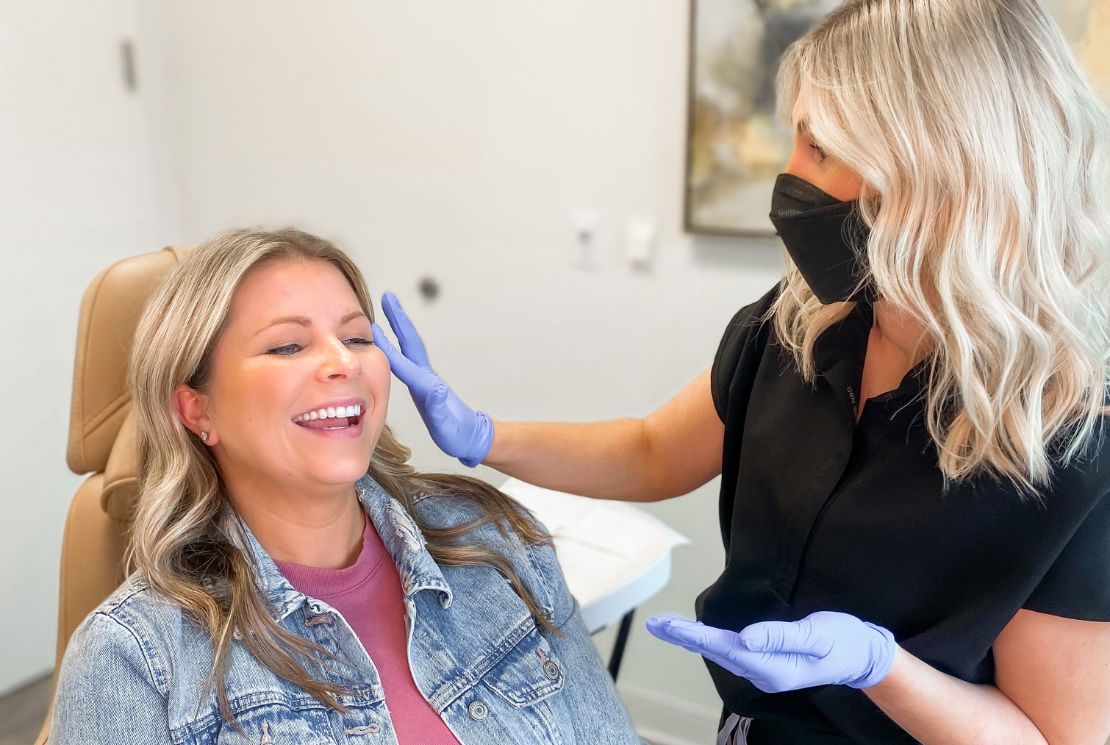Botox is commonly utilized in medicine and cosmetics. It reduces wrinkles by temporarily relaxing facial muscles, offering a smoother appearance. Beyond aesthetics, Botox treats conditions like chronic migraines, muscle spasms, and excessive sweating. Its versatility and minimally invasive nature make it popular for various therapeutic applications.
What is Botox?
The neurotoxic protein that causes muscles to paralyze temporarily is called botulinum toxin, the source of the cosmetic surgery known as Botox. It is widely used to smooth facial wrinkles and lines, providing a youthful appearance. Botox blocks nerve impulses in the targeted muscle area to stop muscles from contracting. This mechanism effectively reduces the appearance of dynamic wrinkles caused by repetitive facial expressions. If you’re searching for Botox and fillers near me, it’s crucial to understand the details of this procedure before making a decision. Botox has emerged as the preferred method for aging gracefully without enduring invasive operations because of the growing popularity of non-surgical cosmetic procedures.
Benefits of Botox
Among the many advantages of Botox is its capacity to minimize the look of wrinkles and creases on the face, address excessive perspiration beneath the arms, and ease the symptoms of persistent headaches. According to a study published on NCBI, Botox has also effectively treated muscle spasms and certain bladder disorders. This treatment has expanded its use far beyond just cosmetic enhancements. Apart from its cosmetic advantages, Botox is also used in medical treatments to alleviate various ailments in patients. Its versatility and effectiveness make it a favored option among medical professionals and patients seeking comprehensive treatment plans.
Side Effects and Risks
Like any medical treatment, Botox comes with potential side effects and risks. Common side effects include headaches, bruising at the injection site, and temporary facial weakness. More serious risks, though less common, include difficulty swallowing, breathing problems, and muscle weakness. It would help if you went with a licensed healthcare professional, detailed health risks before the operation, and visited Healthline. Patients may decide if Botox is the proper treatment for them by being informed about the potential results and having reasonable expectations. Discussing all concerns openly with a healthcare provider helps minimize risks and optimize results.
Botox vs. Other Treatments
Botox is frequently contrasted with other aesthetic procedures like chemical peels and dermal fillers. While Botox paralyzes muscles to reduce wrinkles, dermal fillers add volume to the skin, and chemical peels remove the top layer to promote new skin growth. Every therapy has certain advantages and things to keep in mind. Factors such as the area to be treated, desired results, and downtime should be considered when choosing between them. For example, dermal fillers are more suited for adding volume to the face and treating static wrinkles, whereas Botox is usually recommended for treating dynamic wrinkles. Chemical peels, on the other hand, work best for enhancing overall skin texture and tone.
How to Prepare for Botox
Preparation is critical to a successful Botox treatment. To reduce bruising, patients are recommended to abstain from alcohol, aspirin, and anti-inflammatory drugs at least one week before the surgery. It’s also essential to consult the healthcare provider about any medical conditions or medications that could affect the treatment. Patients should disclose all supplements and over-the-counter medications they are taking to prevent adverse reactions. By following these preparation tips, patients can help ensure they achieve the best possible results from their Botox treatment. Additionally, preparing mentally for the procedure by setting realistic expectations is equally critical.
What to Expect During the Procedure
Botox procedures typically take 10 to 15 minutes and are simple and rapid. The medical professional injects tiny quantities of Botox into the targeted muscles using a small needle. The discomfort is minimal, often described as a slight pin-prick feeling. Usually starting to show after a few days, the full results become apparent around two weeks. Patients can generally return to normal activities immediately after the procedure, making it convenient for those with busy schedules. Patients might feel less anxious and more at ease throughout therapy if they know what to anticipate.
Post-Botox Care Tips
Patients should wait at least 24 hours after obtaining Botox injections and should not massage the treated region. Keeping the head elevated and avoiding lying down for a few hours can minimize the risk of Botox spreading to unintended areas. Icing the injection sites can help reduce swelling and discomfort. These simple post-care tips can enhance the longevity of the treatment’s effects and minimize any potential side effects. Furthermore, patients should adhere to any additional guidelines their healthcare provider provides to ensure a smooth recovery process.
Frequently Asked Questions
How long do the effects of Botox last? The benefits usually wear off in three to six months, when wrinkles may resurface, and muscles become more mobile. As the effects wear off, patients can undergo additional treatments to maintain their desired appearance.
Is Botox safe? Botox is thought to be safe when administered by a qualified expert. Nevertheless, discussing your medical history and concerns with your healthcare provider is essential. When a trained and experienced expert administers the therapy, the probability of complications is significantly reduced.
Can Botox be used for medical conditions besides cosmetic purposes? Research and medical studies support this. Numerous medical disorders, such as persistent headaches, muscle spasms, and excessive perspiration, are treated with Botox. Its applications in medical treatments are expanding, offering relief to patients with various conditions that were previously difficult to manage.

